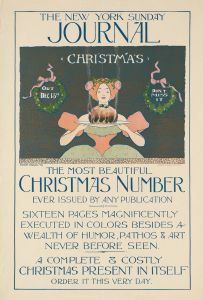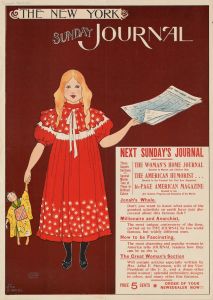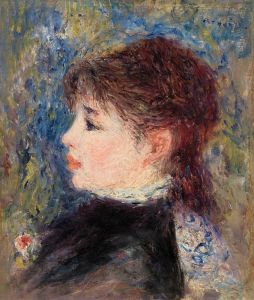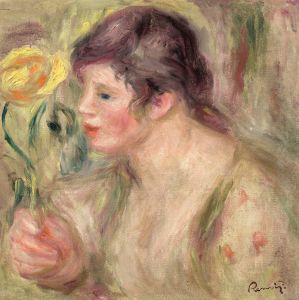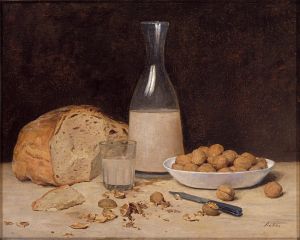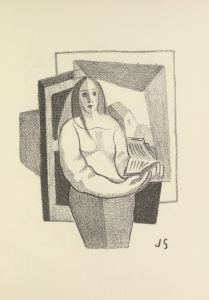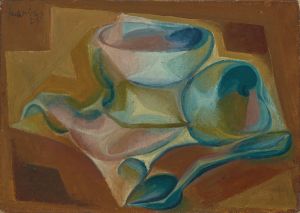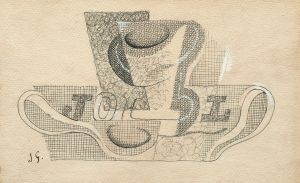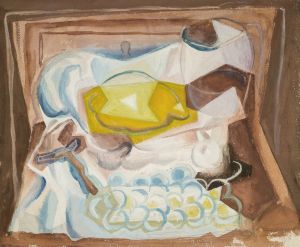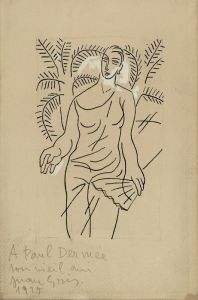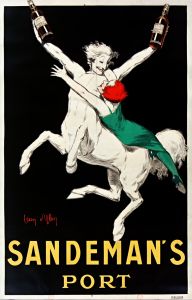
Tabac, Journal Et Bouteille De Vin Rosé
A hand-painted replica of Juan Gris’s masterpiece Tabac, Journal Et Bouteille De Vin Rosé, meticulously crafted by professional artists to capture the true essence of the original. Each piece is created with museum-quality canvas and rare mineral pigments, carefully painted by experienced artists with delicate brushstrokes and rich, layered colors to perfectly recreate the texture of the original artwork. Unlike machine-printed reproductions, this hand-painted version brings the painting to life, infused with the artist’s emotions and skill in every stroke. Whether for personal collection or home decoration, it instantly elevates the artistic atmosphere of any space.
Juan Gris, a prominent figure in the Cubist movement, painted "Tabac, Journal Et Bouteille De Vin Rosé" in 1914. Gris, born José Victoriano González-Pérez in Madrid in 1887, was a Spanish painter and sculptor who spent most of his career in France. He is widely recognized for his contributions to Cubism, a revolutionary art movement that began in the early 20th century, characterized by fragmented and abstracted forms.
"Tabac, Journal Et Bouteille De Vin Rosé" is a still life painting that exemplifies Gris's mature Cubist style. The artwork features a composition of everyday objects, including a tobacco packet, a newspaper, and a bottle of rosé wine. These items are arranged in a way that challenges traditional perspectives, a hallmark of the Cubist approach. Gris's use of geometric shapes and a muted color palette reflects his interest in creating harmony and balance within the composition.
Gris's work is often distinguished from that of other Cubists, such as Pablo Picasso and Georges Braque, by his meticulous attention to detail and his use of color. While Picasso and Braque frequently employed a more monochromatic palette, Gris was known for his vibrant and varied use of color, which added a unique dimension to his paintings. In "Tabac, Journal Et Bouteille De Vin Rosé," Gris employs a range of soft pinks, grays, and browns, which contribute to the painting's overall sense of warmth and cohesion.
The painting is also notable for its incorporation of text, a common feature in Gris's work. The inclusion of the newspaper and the tobacco packet, both of which contain printed words, adds a layer of complexity to the composition. This technique reflects Gris's interest in the interplay between visual and verbal elements, a theme that recurs throughout his oeuvre.
Gris's approach to Cubism was analytical and systematic. He often began with a clear conceptual framework, which he then translated into visual form. This method is evident in "Tabac, Journal Et Bouteille De Vin Rosé," where the careful arrangement of objects suggests a deliberate and thoughtful process. Gris's ability to balance abstraction with representation is one of the defining features of his work.
"Tabac, Journal Et Bouteille De Vin Rosé" was created during a period of significant development in Gris's career. By 1914, he had established himself as a leading figure in the Cubist movement, and his work was gaining recognition in both Europe and the United States. This painting, like many of Gris's works, reflects his commitment to exploring the possibilities of Cubism while maintaining a distinct personal style.
Today, Juan Gris is celebrated as one of the key contributors to the Cubist movement. His work continues to be studied and admired for its innovative approach to form, color, and composition. "Tabac, Journal Et Bouteille De Vin Rosé" remains an important example of Gris's artistic vision and his ability to transform everyday objects into complex and engaging works of art.





